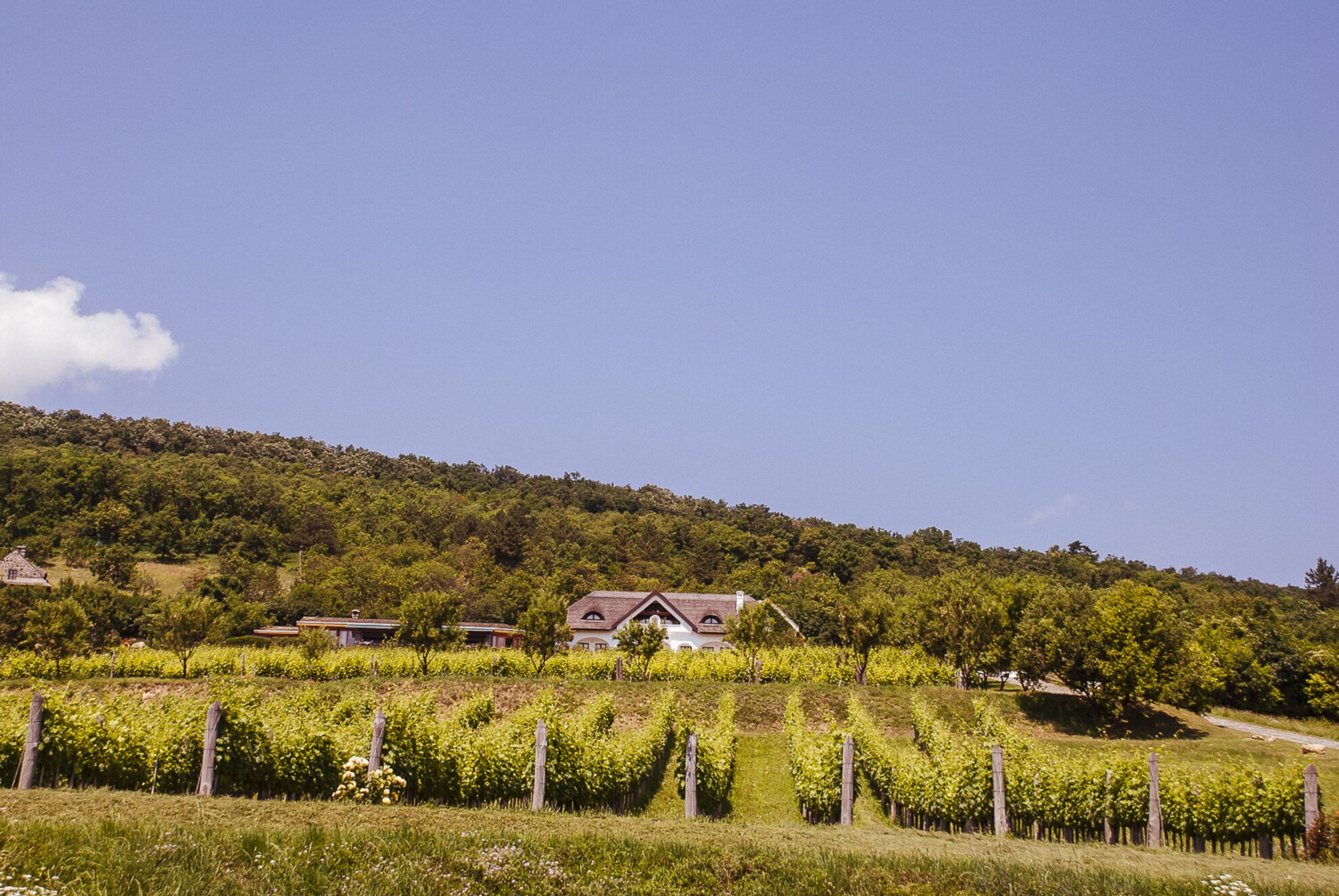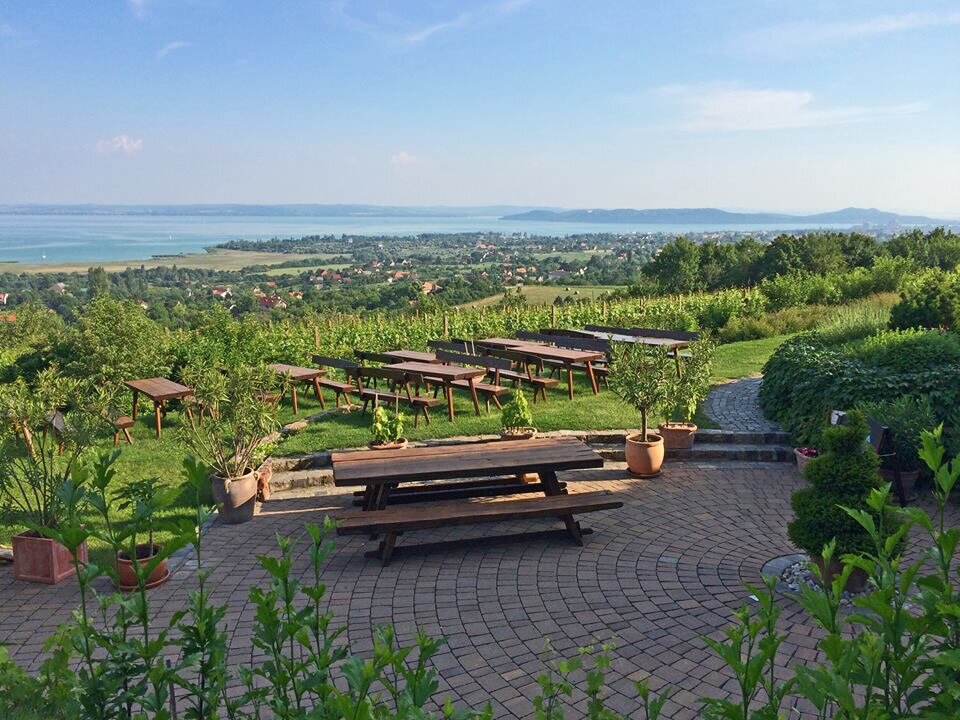All the Kovács family wanted was to sip their own wine in the shade of the almond tree, while watching the start of Kékszalag from a prime location. This did come true, but now they have a little more wine than what the whole family could consume, which is not a problem, because this way the foreign Michelin-starred restaurants can buy it, too. All of this started from their vineyard at Szitahegy, but instead of the shade of the almond tree, it all came from the vision of the eldest son, Tamás Kovács. We introduce the Szent Donát Manor through two articles; the first one is all about wine.
When he was only 16 years old, Tamás told his father that he wanted his own little study-vineyard. One that’s like the old ones of Csopak – with stakes, Gobelet training system, a classic “squatting” one, because that delivers the best quality. And the answer was this: “All right son, but you’ll do the pruning and the hoeing.” They agreed, and also decided that the revenue from the wines will go to Tamás. Years later, when the vine started to bear fruit, Tamás was able to set the price of his selection of a few hundred bottles in the same 5,000 forints category where the country’s most expensive Welschrieslings are found. And it all was soon gone, even at this price. By then, he studied economics at Corvinus University, and he realized that he wanted to continue this work after his graduation.
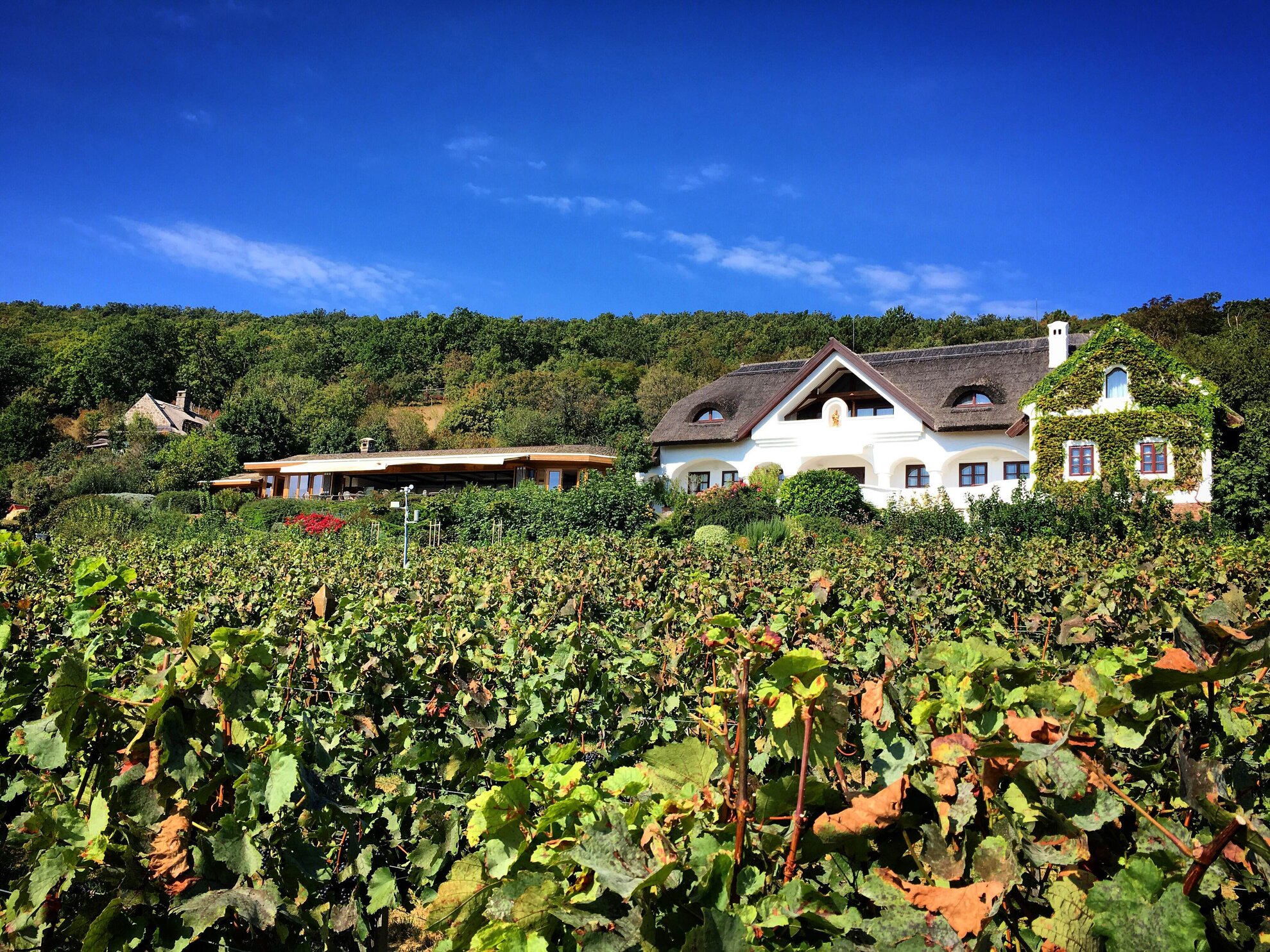
Everybody wants to see this view
The family has Balaton-roots on both the paternal and the maternal side. Their land in Csopak belongs to the father’s family, while the other half of the estate, the maternal half, stretches to the Káli Basin. The solar eclipse of August 11, 1999, which was such a big event that half of the country awaited it with special glasses (while the other half was getting ready for the apocalypse), proved to be a life-changing occasion for Tamás and his family.
“Since you can see two-thirds of Lake Balaton from our estate in Szitahegy, the solar eclipse promised to be spectacular” said Tamás. “So our plan was to have a picnic at our table under our almond tree, and spend the afternoon there.” But when they arrived to the usually quiet vineyard, they were greeted by a festival-like atmosphere, with hundreds of people awaiting the eclipse: Tamás and his family hardly even found a spot for themselves in their own vineyard. They had no idea where did all those people came from, but starting from that day, the vineyard became a popular lookout point, and many people felt like the table under the almond tree was their stomping ground.
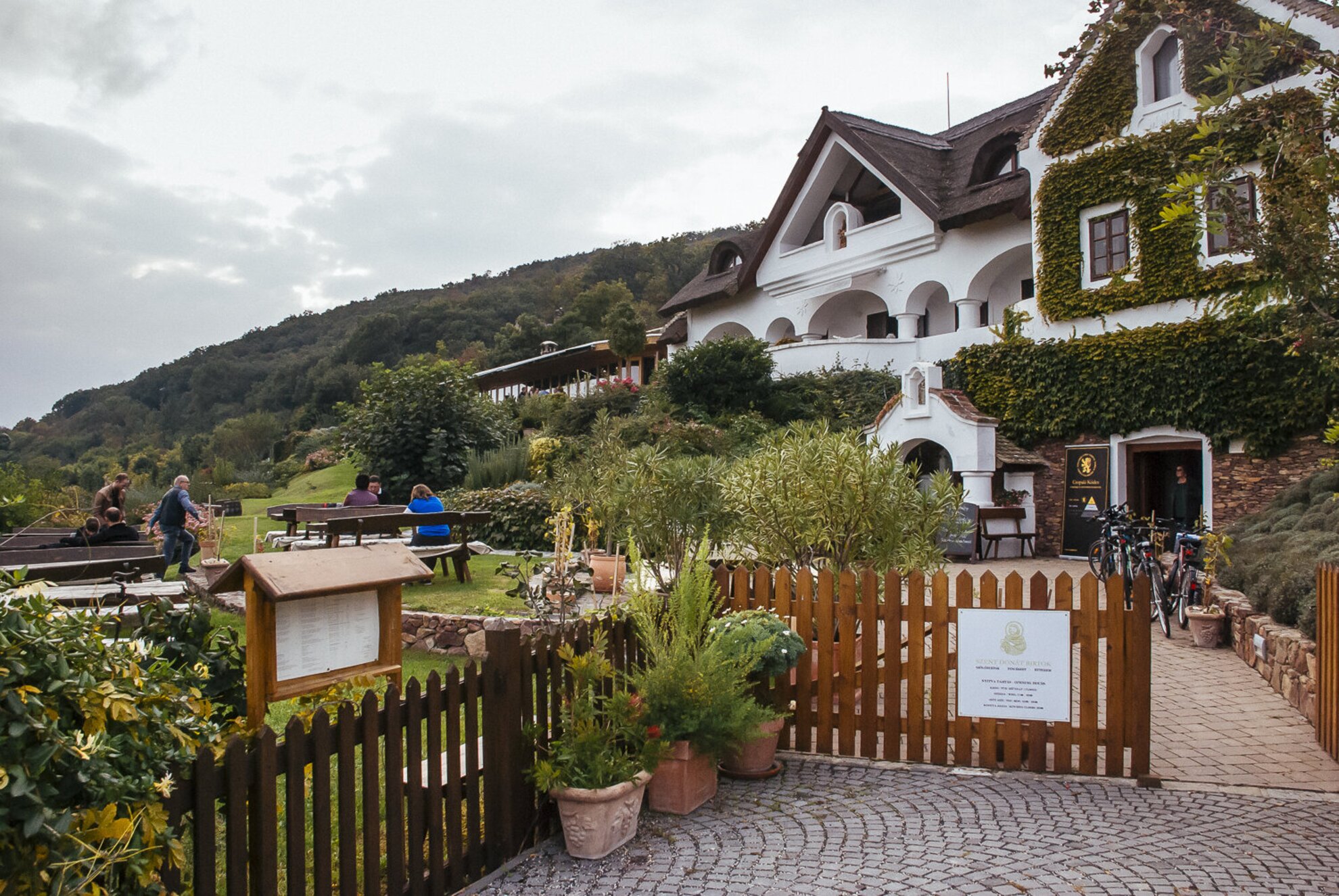
In the beginning, the father wondered how great it will be to drink their own wine in the shade of the almond tree. First they built a cellar in the estate. They hired Ferenc Heimann, a legendary cellar constructor from Szekszárd, to design and construct the cellar. The country house above the cellar was also built by Heimann, the folk-styled building was designed by architect Endre Szűcs from Mérmű Studio. (The cellar also won the prize for Hungary’s most beautiful small estate this year.)
The atmosphere inside is partly defined by the fact that the building was constructed with hundreds of years old materials, namely the materials and beams from a mill from Soroksár, that was built during the Reform Era – but at first we won’t notice this as we’re walking inside. As a result, the interior is like the catacombs of a French castle, with the wooden barrels lined up here, and lately they are accompanied by pyrogranite stoneware, next to them are the stocks of aging bottles, filled with the wines of Szent Donát Manor.
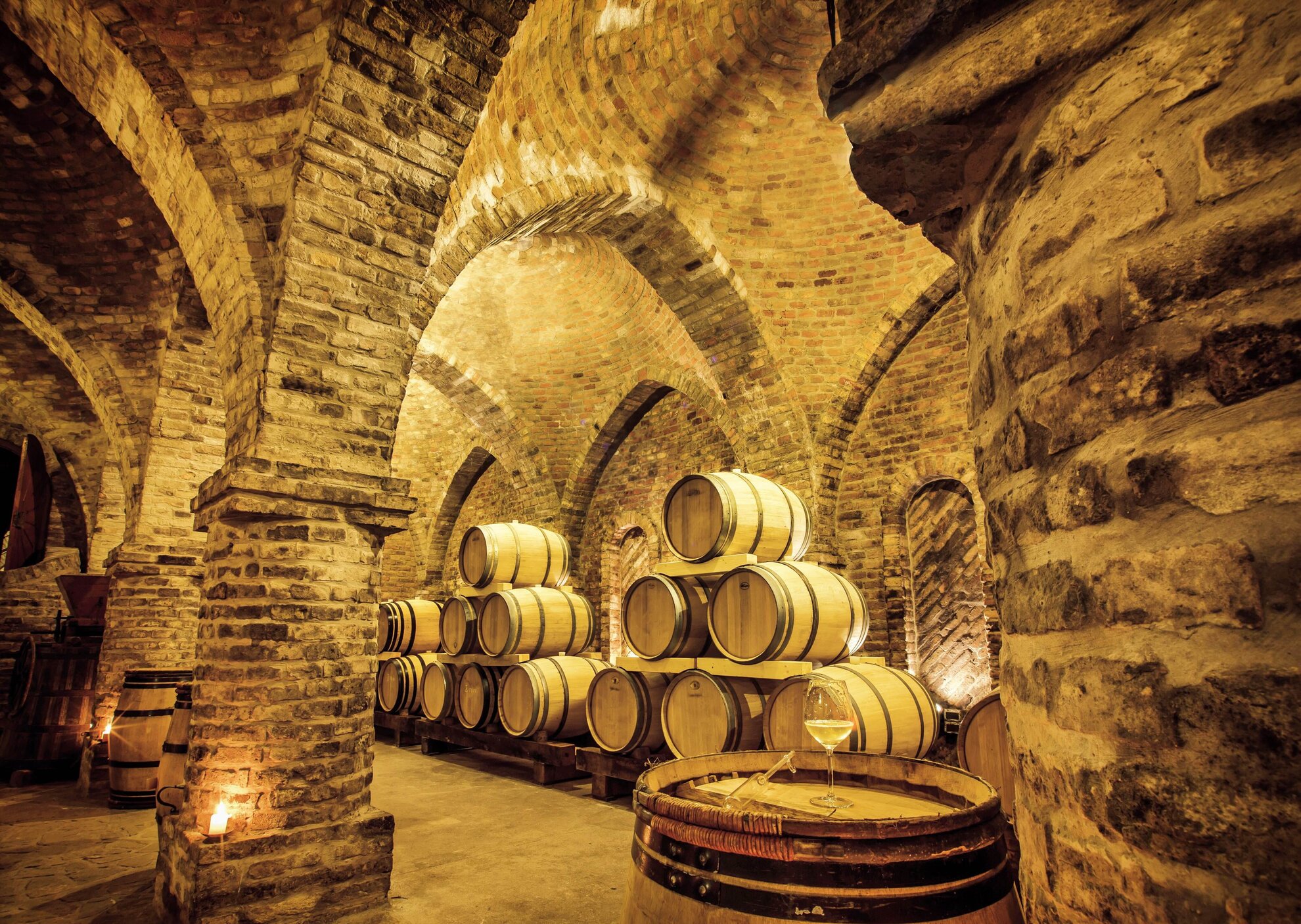
Their Blaufränkisch is an amazing beast
With the Szent Donát wines that received three grapes from Gault & Millau in 2016, the cellar got listed among the 80 best wineries of the country. The fact that Tamás and his family treats grapes above the average level shows in their numerous prizes as well, and a major evidence is that three Michelin-starred Belgian restaurants, and two Michelin-starred ones from Vienna put the various wines of Szent Donát Manor on their wine list last year. Their export keeps expanding too
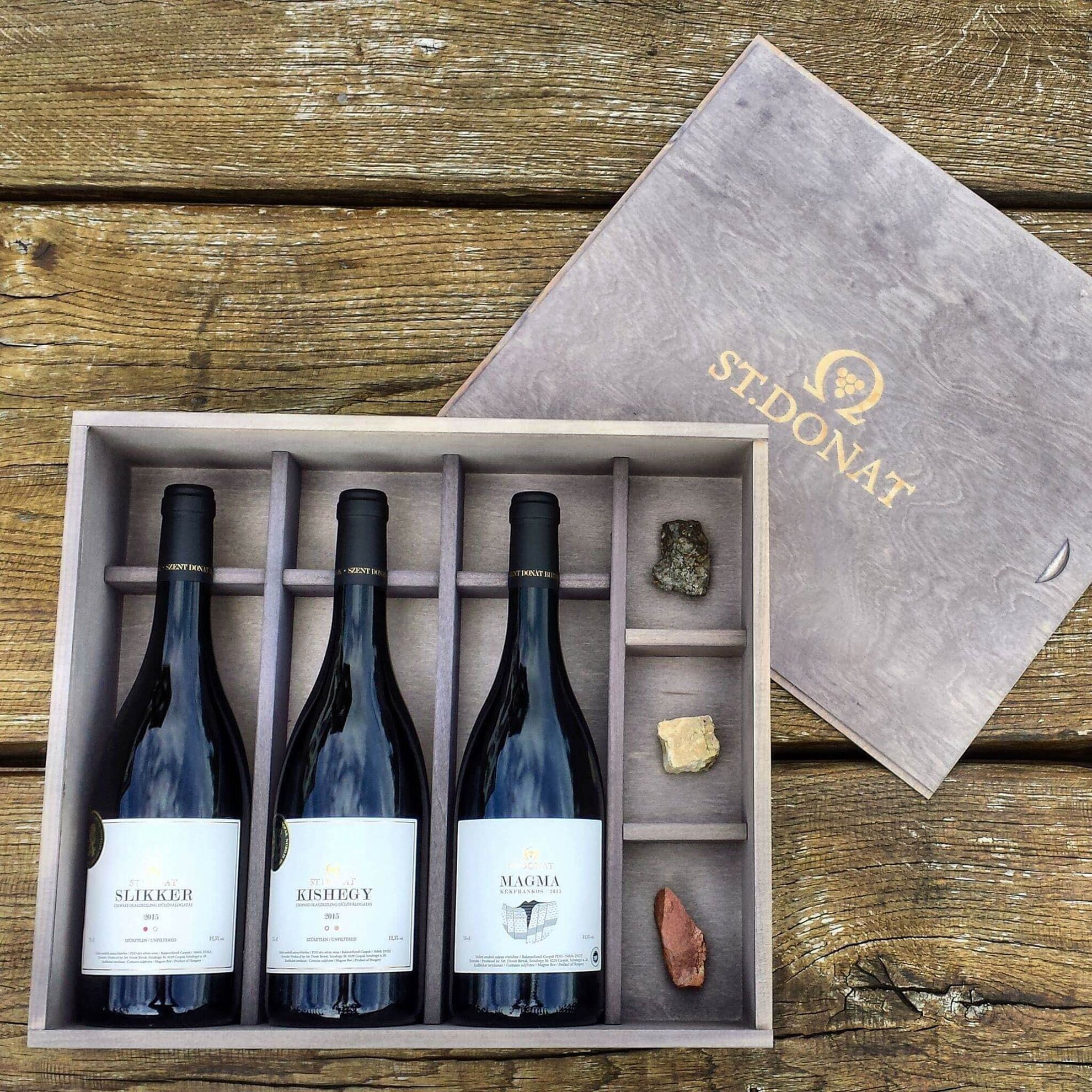
We spoke to multiple wine experts and many of them praised the wines of Szent Donát from the past couple of years; Attila Jásdi, the son of István Jásdi, literally said that “their 2015 Blaufränkisch is an amazing beast”. Stella D. Bánlaki, the editor of the online winery website called vinoport.hu said it accurately: “Tamás is not only keeping his finger on the artery of the wine-world, but he’s also trying to pick up the rhythm of the greats. What this means is that he’s not afraid to get inspiration from the professionals, while he also constantly keeps experimenting. He’s searching for the best areas, the possibilities of the varieties, and the oenological process that brings out the best from the ingredient. He understands that it’s important to communicate with the costumers about the vineyards and the soils (there’s an obvious emphasis on the super, clean wine labels), but also that it’s hard to sell the wine if there’s no wine tourism and a professional culinary background at the wine region.”
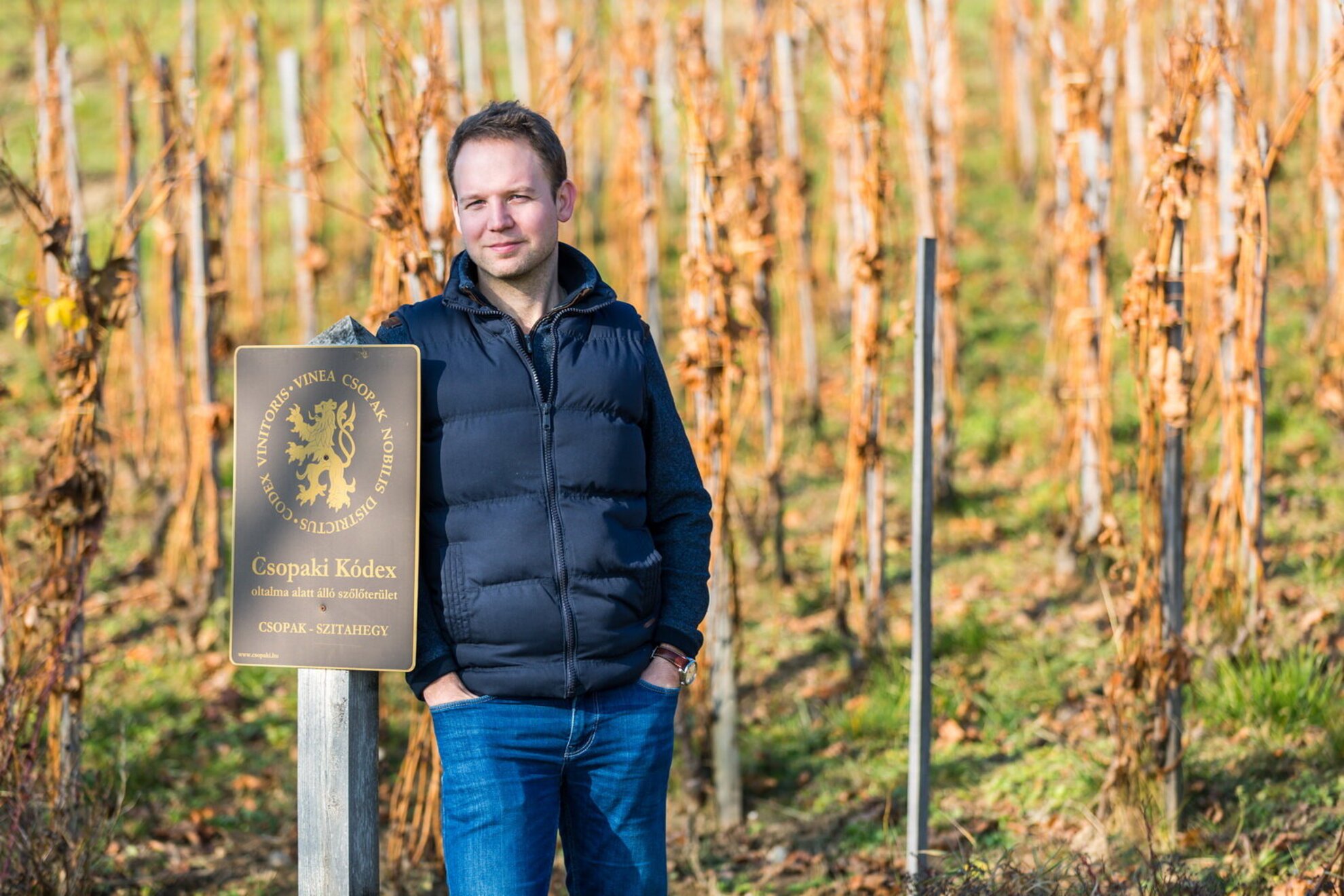
This accentuates the same observation that we made after talking to him a couple of times: Tamás is ferociously conscious in every aspect. This is clear when he talks about the area’s geographical features, and the “second sun” that warms the vineyards of Csopak as it’s reflected from the surface of Lake Balaton, or when he talks about the effects of the different soil types on Welshriesling with such a preciseness that would put geography aficionados to shame, but it even shows when he sends over press releases to the editorial office.
When we mention him that number three has a seriously deliberate role with them, he simply laughs. And we are not exaggerating, as we keep bumping into number three here:
- They work with three varieties - Welshriesling, Furmint, Blaufränkisch,
- They have vineyards in three areas – Csopak (and Paloznak), Tihany, Káli Basin,
- Three different sedimentary soil types meet at Csopak – marl, basalt, new red sandstone soil.
The current plan is to expand the capacity, and to double the current yearly 30-40 thousand bottles production to 80 thousand bottles per year. To achieve this, their cellar in Csopak will be larger, and their estate will be expanded from the current 10 hectares to about 15-20 hectares. This amount will not run out under the almond tree.
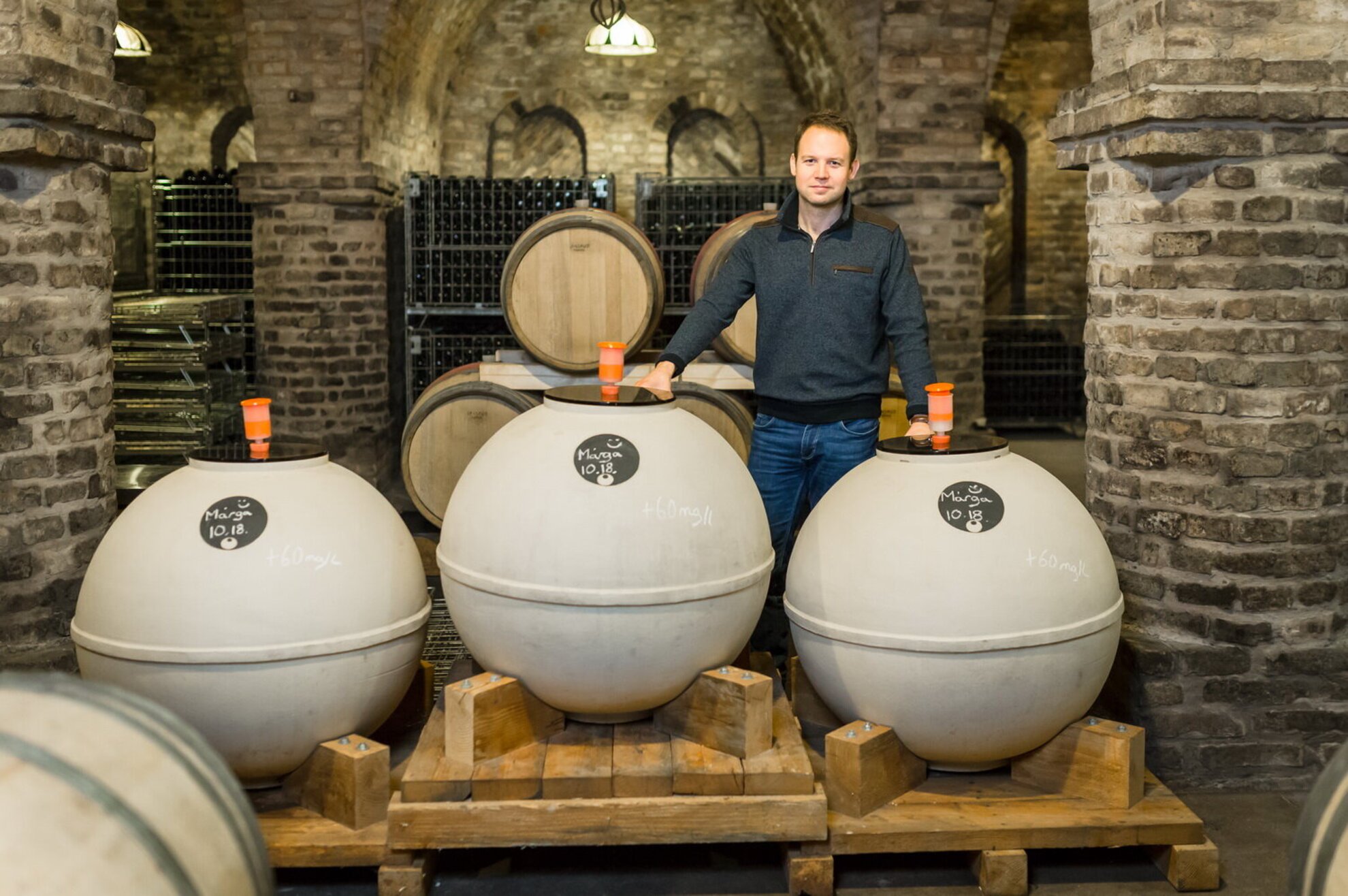
What happens if there’s no hail?
He had no master as a winemaker, and he even mentions that “sometimes it would be nice to sit down to a school desk”. He learned a lot from his chemical engineer father, he read dozens of books on the topic, he follows local and international professional blogs, and saw more than ten harvests up close, so he knows what to expect from a certain vintage.
Yet every year, he realizes that although it’s nice to plan things out, you can’t plan the unexpected: a ten minutes long hailstorm defined the whole harvest of 2016. “Even the elders had no recollection of ice in Csopak, so we had absolutely no idea what to expect.” Compared to the initial panic, the result fortunately weren’t that bad; the grapes had been damaged, but they didn’t have to throw away half of the harvest as they first thought. However, they did feel sorry for all that damaged crop; as Tamás said “I would have liked this year’s harvest even better than last year’s, if it weren’t for the hail. Last year was too warm, and more rain was good for the vineyard.”
Written in Codex
He doesn’t mention any other masters besides his father, but he did learn a lot from local cooperation and the work with the local producers; his relationship with the Jásdis seems to be the strongest from among the locals. We previously reported about the Csopak Codex on multiple occasions; shortly, it means that winemakers have to fit strict origin protection criteria and judging before they can use the codex’s mark. As Tamás explains it, it doesn’t sound difficult at all: “You have to handle the grape in a way that it reaches old age, the Welshriesling has to be harvested with a 19-20 sugar content, so that there’re enough acids left; then it has to be fermented until dry, can’t be in the barrel for too long, can’t be fermented to be too fragrant. The Welshriesling of Csopak has been made this way for a hundred years.”
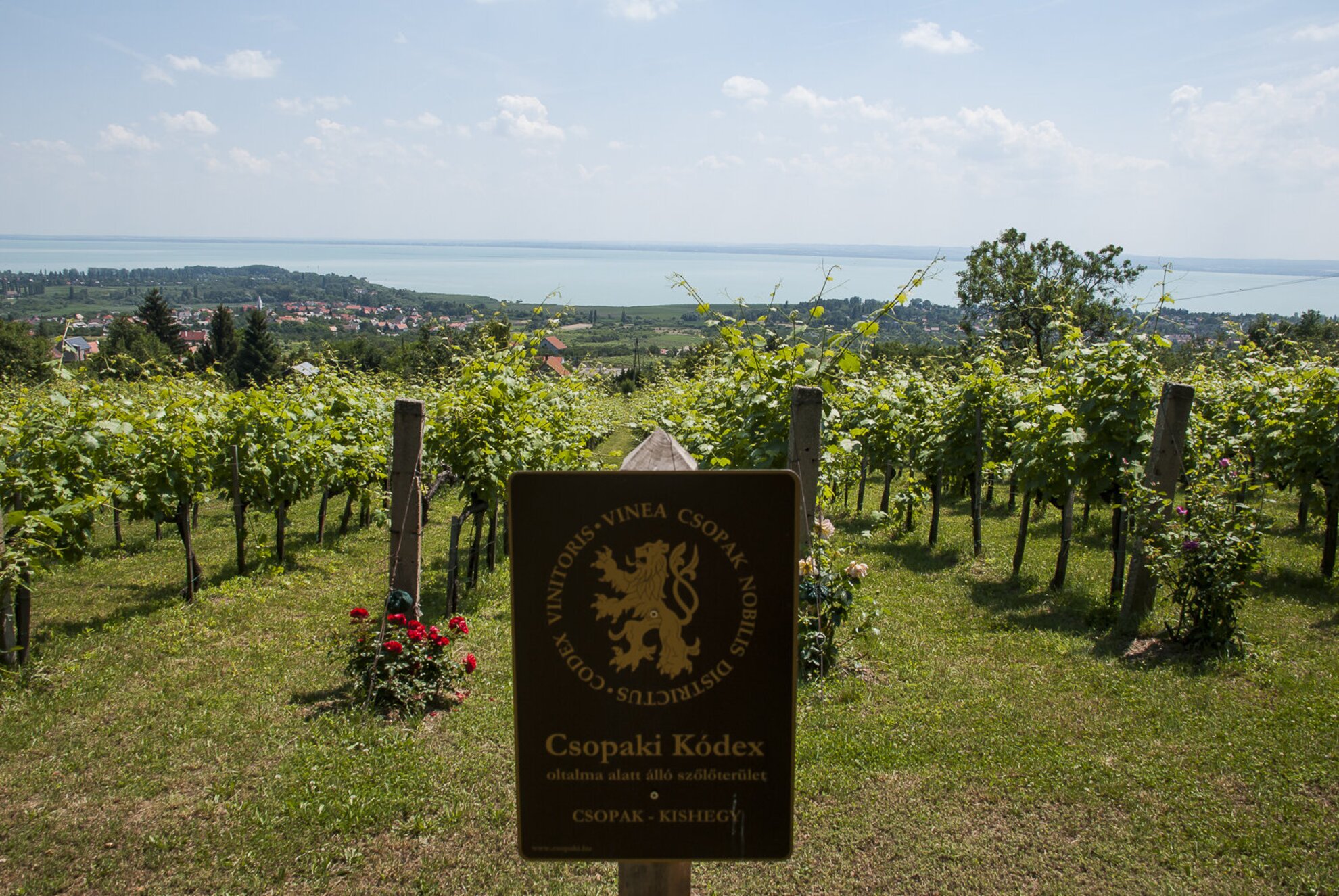
Every step of the process is inspected, and this is not a loose system of rules among friends, that can be changed every year to suit the circumstances, and so that everyone can have a sense of achievement. Attila Jásdi even said that among themselves they jokingly say that “they are those idiots, who couldn’t manage to fit their own rules twice in the past four years”, as since the codex was introduced in 2012, there were years when none of the cellars were able to produce a Codex-wine. However, this ensures that the consumer will constantly get the expected quality.
A total of 13 wines of eight cellars – an unusually high number – received the qualification at the 2016 fall judging. The explanation was the exceptional summer of 2015, and it showed that what a good vintage can do. Yet the stores are not filled with Codex-wines, and this won’t change in the future. As Tamás said, “these are small quantities, because there are only so many vineyards in the area. One can produce 3-4 thousand bottles of wines, so this will always be interesting for a smaller audience”. We would only add that the wine that got to foreign Michelin-starred restaurants from Csopak is one of these, which is quite a good advertisement for the region.
The unity of the people of Csopak seems very strong from the outside, and he says that they all are truly in a friendly relationship, especially since there’s no point of rivalry in a market so small. It makes a lot more sense to create a Csopak-brand together, one that empowers everyone. Attila Jásdi thinks the same; according to him everyone can get the Codex qualification if they fit the requirements, and meet the expected quality, but it’s not among their goals to get all the area’s producers making such wines.
There were vineyards, there are vineyards, but they may not be in the future
This unity shows in the way Tamás Kovács agrees with István Jásdi when it comes to the slowly disappearing Balaton vines. As he says when we mention Jásdi’s publication from last fall “It’s not a question, because these aren’t worries, these are the facts.” The problem is that the last time a significant amount of vines were planted on the north shore of Lake Balaton was in the ‘80s, while during the production, they cared more about the quality than the quantity, which, to put it mildly, did no good for the plantations.
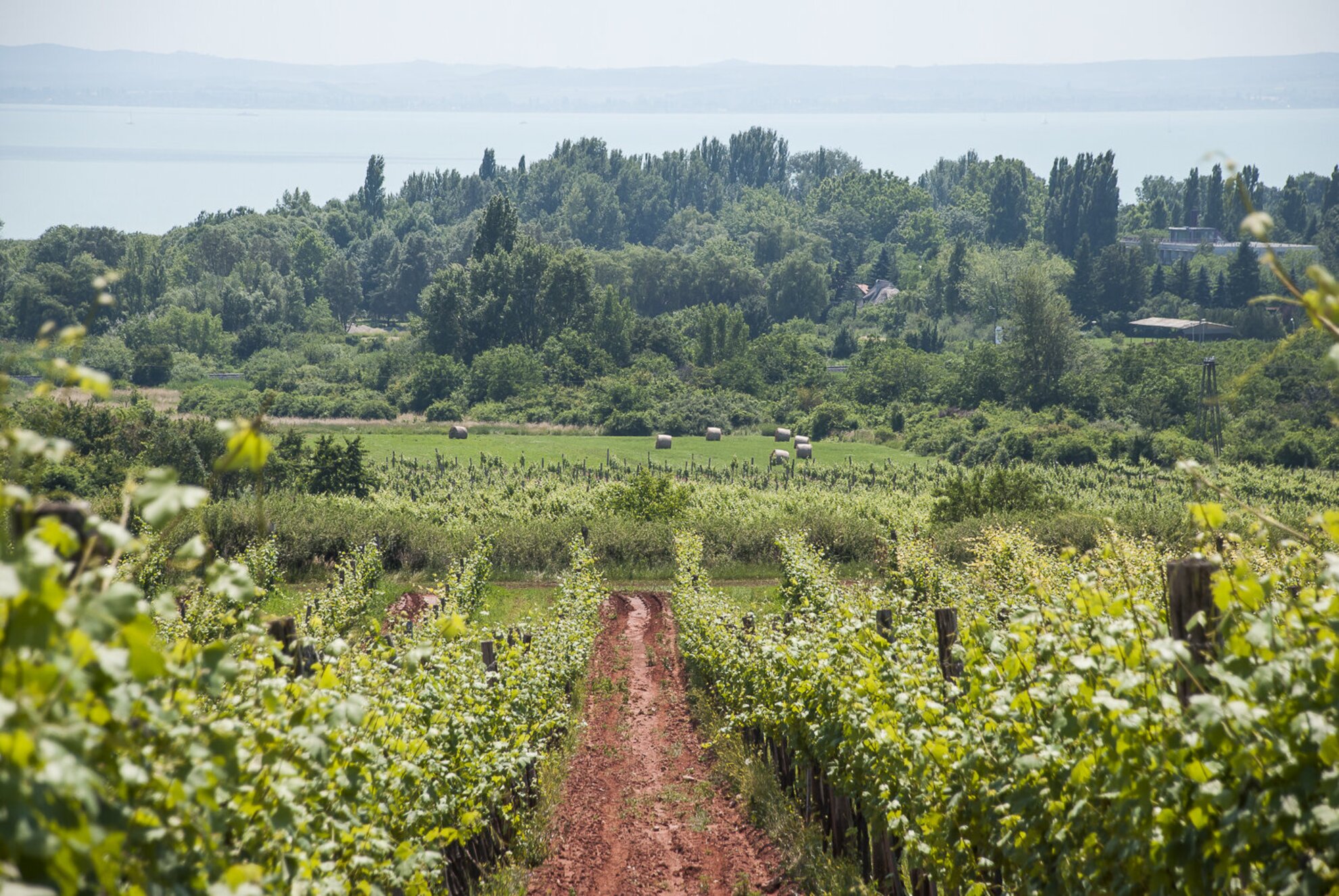
There have been talks about the villas with swimming pools that are often said to be – with irony – “permitted as fire hydrants” around the Balaton Uplands; Tamás thinks that the number of these multiplied because of a simple market process. “It doesn’t pay off to produce grapes at Lake Balaton if you won’t make wine from it. The buying price of grapes is so low, that the invested labor and money won’t be refunded. To buy at least five hectares of vineyards and sign a long-term contract with a producer who would buy it for a price each year that’s good for both parties would be a good model. However, it’s not typical right now. There are a few wine-producing monopolies, who can buy the grapes for as much as they wish, and that’s not good for the vineyard owner. I don’t know what’s the aim of these winemakers, because this won’t work for them in the long run. The less local vineyards there are, the less grapes they can get, so the more they have to buy from somewhere else, possibly even from abroad. It just doesn’t add up.”
Brushwod clearing and harvest
“Arács (a part of Balatonfüred – ed.), unfortunately, has fallen, there’re barely any vineyards left there” he starts listing the areas that he thinks are in danger. “All hillsides, from where there’s a view of Lake Balaton are endangered on the north shore, so Badacsony could be in trouble, just like Nivegy Valley or Alsóörs.” This is already a huge territory, but the list is far from being over as, according to Tamás, the second line, Káli Basin, and Pécselyi Basin are also in danger. “Those who are satisfied with the nice view of the Káli Basin, just take a step back.”
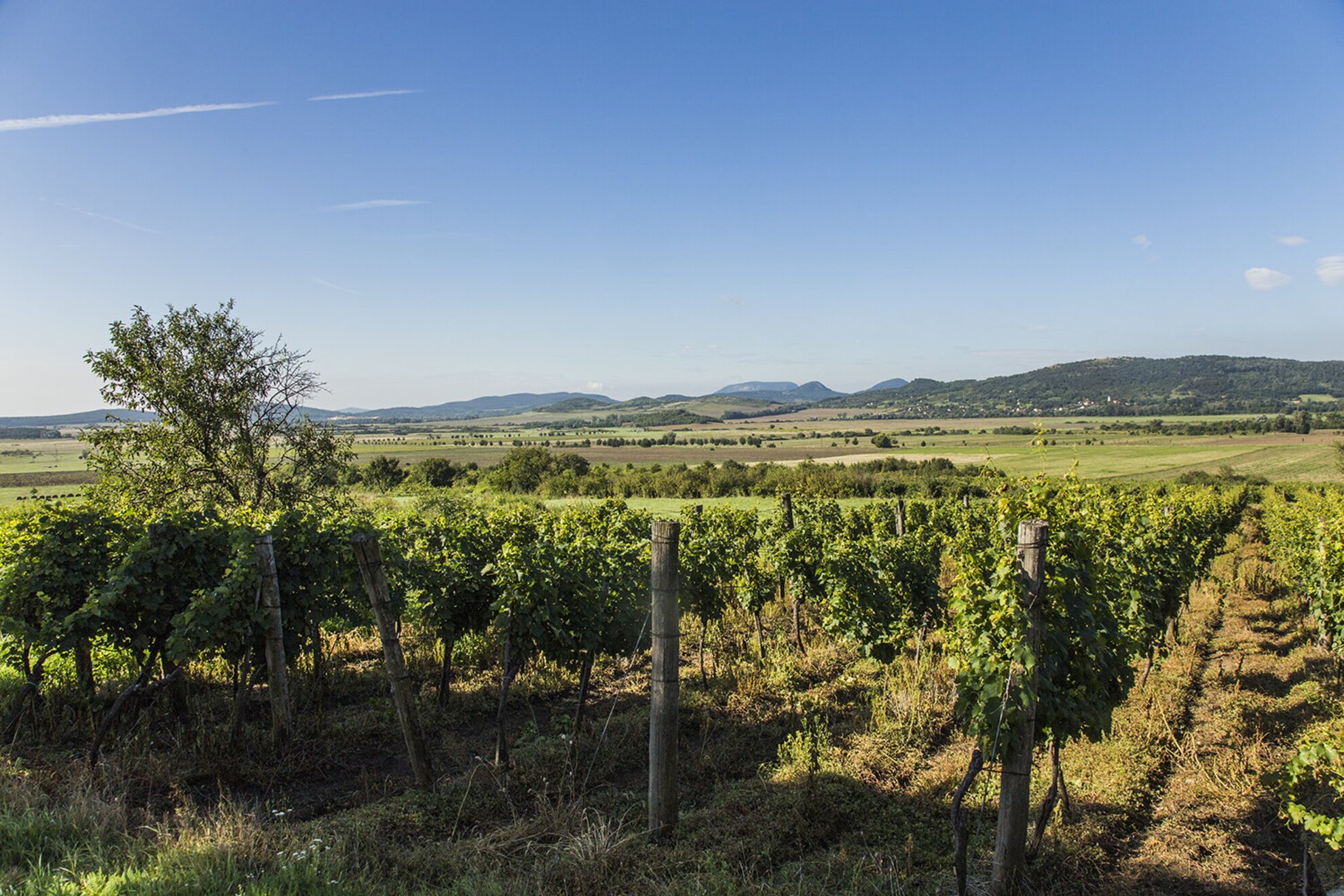
The question, of course, is how to stop this. Tamás thinks that “the most important thing would be the legal protection of the vineyards, with more stringent building regulations and without loopholes”. He emphasizes the loopholes regarding the years after the change of regime, when there were many vineyards bought because of speculation. The owners try to sell them priced as construction lots, while no one obliges them to the tend to the vines, therefore sometimes even the finest vineyards remain uncultivated.
They addressed the issue at the latest meeting of Balatoni Kör, and they are developing a set of legal rules which will summarize policies regarding the solution of this issue. They would like to communicate it widely, and lobby with it at the ministries and at other decision makers, because they believe that from a touristic point of view, it would be much more fortunate if the people who visit here would see cultivated vineyards on the hillsides of the north shore. According to Bence Laposa, the chairman of Balatoni Kör, they could see some results if people would abide the current rules. “You can only build a building on a wine-growing cadastral area if vineyards are cultivated on at least 80 percent of the land. However, what happens very often is that they build the house, and then two years later they cut down all the vines. This is forbidden by the law, yet nothing happens.”
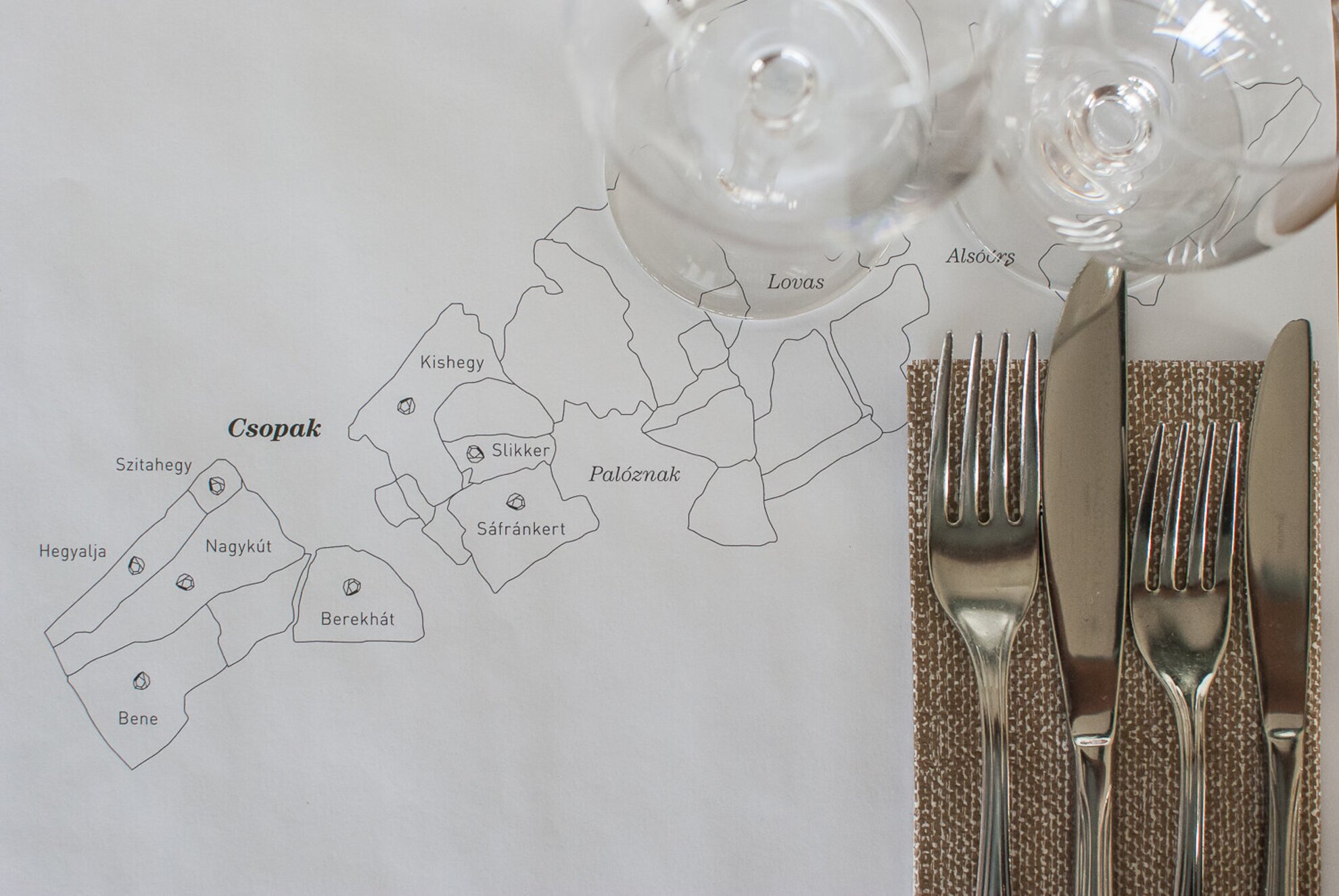
Tamás Kovács mentions his home, Csopak, as a good example: “Here the council will impose a penalty if you have a vineyard but you don’t tend to it.” István Petrányi mentioned the same thing when they presented their wine terrace: they bought their land and started wine-making 15 years ago, knowing these rules. Tamás also said that according to a survey by the council, the residents of Csopak are united in supporting the strict protection of vineyards.
